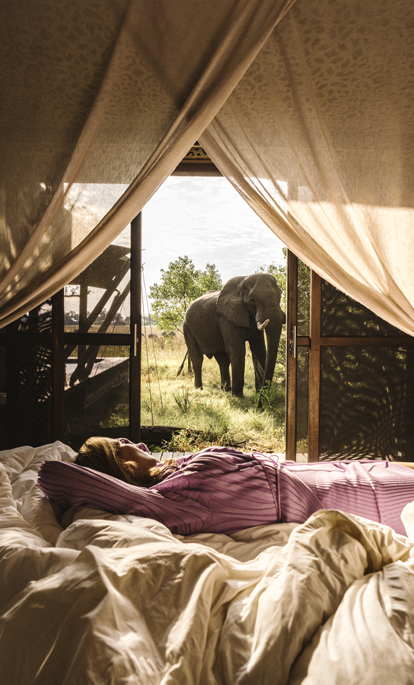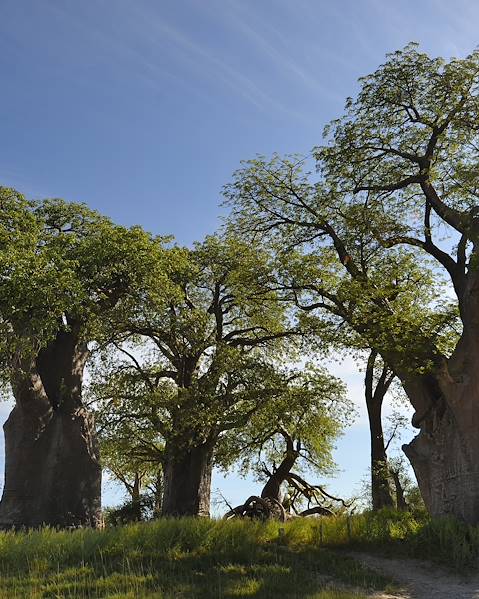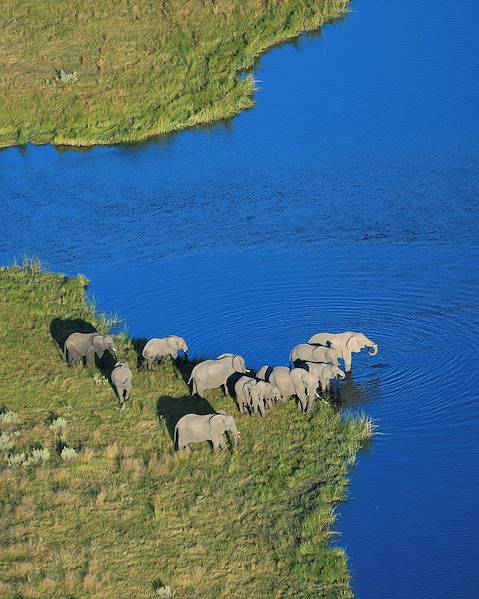Botswana is classic safari country, where game drives, bush walks, mokoro cruises and other outdoor activities take travellers into the wild. During the dry winter season, spot huge herds of elephants bustling around waterholes and enjoy unobstructed views of wildlife across the foliage-free plains. Or travel during the aptly named ‘Green Season’ for fewer people and lush verdant landscapes. Whatever the time of year, our experts know what items you should bring to help elevate any African adventure. Let’s take a closer look at what to pack for Botswana.
What to Expect from the Weather
Botswana’s climate transitions between semi-arid and subtropical depending on where and when you’re visiting. Like many African nations, Botswana experiences a dry and a wet season as opposed to the four seasons we have in the UK. The dry season between April and November offers dry days, balmy temperatures[IK1] and crisp, cold nights, whereas the rainy season is known for high levels of humidity, temperatures flirting with the 30s and sudden afternoon showers.
What to Pack for Botswana: The Essentials
Clothing
Comfortable, casual clothes in muted colours are recommended while on safari. It’s better to avoid dark fabrics which will absorb sunlight and leave you sweltering in the mid-day heat. Likewise, white clothes are not recommended as they will quickly become dusty and dirty. Leave the blue behind too – tsetse flies are drawn to it and their bite can give you African trypanosomiasis (otherwise known as sleeping sickness, which really isn’t something you want to get). It’s also important to avoid camouflage or military clothing when thinking about what to pack for Botswana as it is considered unlawful. Pop the following items in your luggage for a stress-free safari:
- Natural colours and fabrics: clothes in khaki, green, brown and beige. Loose cotton and linen shirts and trousers are ideal.
- Jackets and jumpers: for early morning and evening game drives.
- Comfortable footwear: your best option is to pack closed-toe shoes for drives and walks, plus sandals or flip flops for showers and boat excursions.
- Finally, include a swimsuit and some smart-casual clothes for wearing at bush dinners.
Winter Additions
In winter, temperatures can drop below 10°C, making morning game drives quite chilly. Places like the Kalahari can get icy, so travellers should ensure they’re well prepared for the cold. Packing a warm jacket, scarf, and beanie is highly recommended. Layers are ideal as these can be removed as the temperatures – and the excitement levels – rise.
Summer Additions
During the rainy season, visitors will want to switch the woollies for waterproofs. A raincoat and a water-resistant bag for cameras and other equipment will come in handy. Most safari lodges use vehicles with canvas roofs and drop-down sides to protect guests against sudden downpours and many also provide ponchos and blankets.
Medicine, Toiletries and Sun Protection
It’s essential to take precautions against mosquitos when thinking about what to pack for Botswana, whether that means taking prescribed medicine or using insect repellent every day. The country is in a malaria zone, with the risk increasing as you head north into the Okavango Delta. If travelling on a light aircraft, be sure to have some motion sickness tablets on hand as the journey can be shaky. While on safari, it is worth popping some eyedrops in your pocket, as dust and flies often make a habit of getting in your eyes while trundling along in the 4x4. Above all, we cannot emphasise enough the importance of sunscreen with a high SPF. Sunshine totals are high year-round with winter being the sunniest season. Many lodges provide basic toiletries like soap and shampoo, but you may wish to bring your own.
- Sun and insect protection: We recommend packing sun cream, sunglasses, a hat, insect repellent, after sun and lip balm.
- A small first aid kit: This is always a plus. Include medications for pain, upset stomach, nausea, hay fever and bite cream.
- Dry shampoo: For early mornings when you feel dirty but don’t have enough time to shower before your activities.
- Gadgets and Accessories
When considering what to pack for Botswana, certain accessories will take your safari experience, particularly wildlife watching, to another level. First and foremost, you’ll need a pair of binoculars. And even though it’s possible to take great photos on a phone, a camera with a wide angle zoom lens will give you the best pictures. When it comes to charging your gadgets, Botswana uses two types of plugs – the South Africa type M with three round pins and the British type G with three rectangular pins – so you may need an adapter, and a converter if your devices aren’t designed for the local voltage (230V).
- Binoculars and camera equipment: For capturing the incredible wildlife and scenery.
- A step-down converter and an adapter: Packing a universal adapter will cover you for all eventualities.
- A power pack or solar charger: To boost your battery when out and about, you don’t want to miss that photo opportunity.
- A torch: Camps get very dark at night. A headtorch is ideal, but handheld works fine.
It’s also a good idea to keep a copy of your passport, credit cards, travel insurance and other important documents in cloud storage so that you can access them if you lose your things.
















